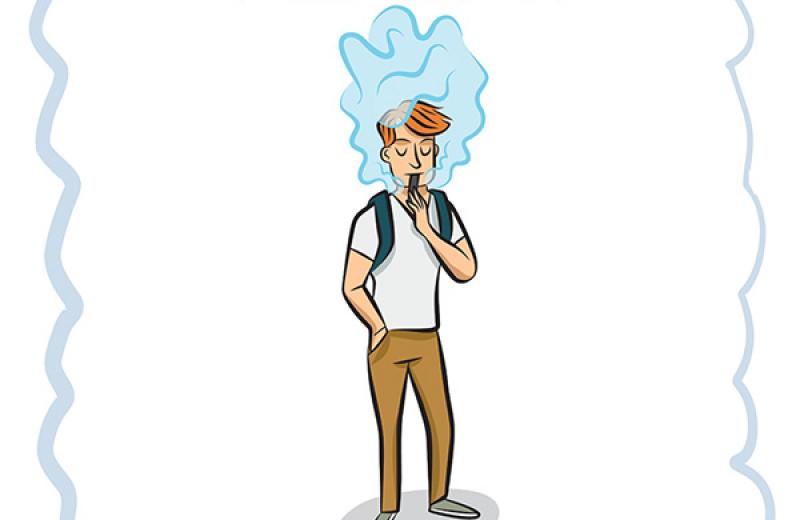It’s true that with vaping, you’re not breathing in tar and other components of smoke the way you would with a cigarette, but research shows it’s still risky for your health: you’re inhaling particulate matter, nicotine, heavy metals such as lead, and other cancer-causing toxic chemicals.
“There's metals found in vaping that are being inhaled into people’s lungs, and there’s nicotine, which puts people at risk of addiction," says Lindsay Willoner, Northern Health’s Regional Nursing Lead, Tobacco Reduction. “Vaping has only been on the market in Canada for about a decade, so we don't know the long-term effects on public health."
What is vaping?
Lighting a traditional cigarette makes tobacco burn, releasing smoke that contains nicotine. The smoker breathes it in, delivering nicotine to their lungs.
With vaping, there’s no burning. Instead, the vaping device heats a liquid and converts it to a vapor that the user inhales. This vapour is often flavoured and can contain nicotine.
"Because it looks like it's smokeless and might not give off any odour, people may think there's really no harm with it,” says Willoner. “But really, the e-juice or vape may have addictive substances in it, so it doesn't come without harm."
Vaping can harm your health
Short-term effects of vaping include coughing, sneezing, increased heart rate, and worsening of asthma symptoms.
Long-term effects can include lung disease, heart disease, and some types of cancer. Also, children and adults have been poisoned by swallowing the e-juice or absorbing it through their skin.
There’s also “popcorn lung,” caused by the buttery flavouring found in some vaping products — it can cause bronchiolitis obliterans, a serious and irreversible lung disease.
Vaping is illegal for those under 19
With vaping on the rise among youth, there’s the risk of a new generation becoming addicted to nicotine. Cannabis can also be vaped with an undetectable smell.
Tobacco smoking rates continue to drop, with 6% of students reporting they were daily smokers in 2018 vs. 10% in 2008.
But in 2018, 21% of all BC students reported vaping with nicotine, and 19% without nicotine. However, as of 2018, vaping is illegal for those under the age of 19.
How to quit
The best thing you can do for your health is to quit vaping. For help, visit quitnow.ca or call 1-877-455-2233:
- Get information and free nicotine patches, gum, lozenges, or inhalers through the BC Smoking Cessation Program.
- You can get these products through your pharmacy.
You might be able to get financial help to buy smoking cessation medications.
This article is based on a presentation by Northern Health’s staff members: Lindsay Willoner, Regional Nursing Lead, Tobacco Reduction; Petrina Bryant, Regional Nursing Lead Healthy Schools and Youth; and Stacie Weich, Team Lead – Interprofessional Team 7. It originally appeared in Northern Health – Health and Wellness in the North, Summer 2019.














Comments